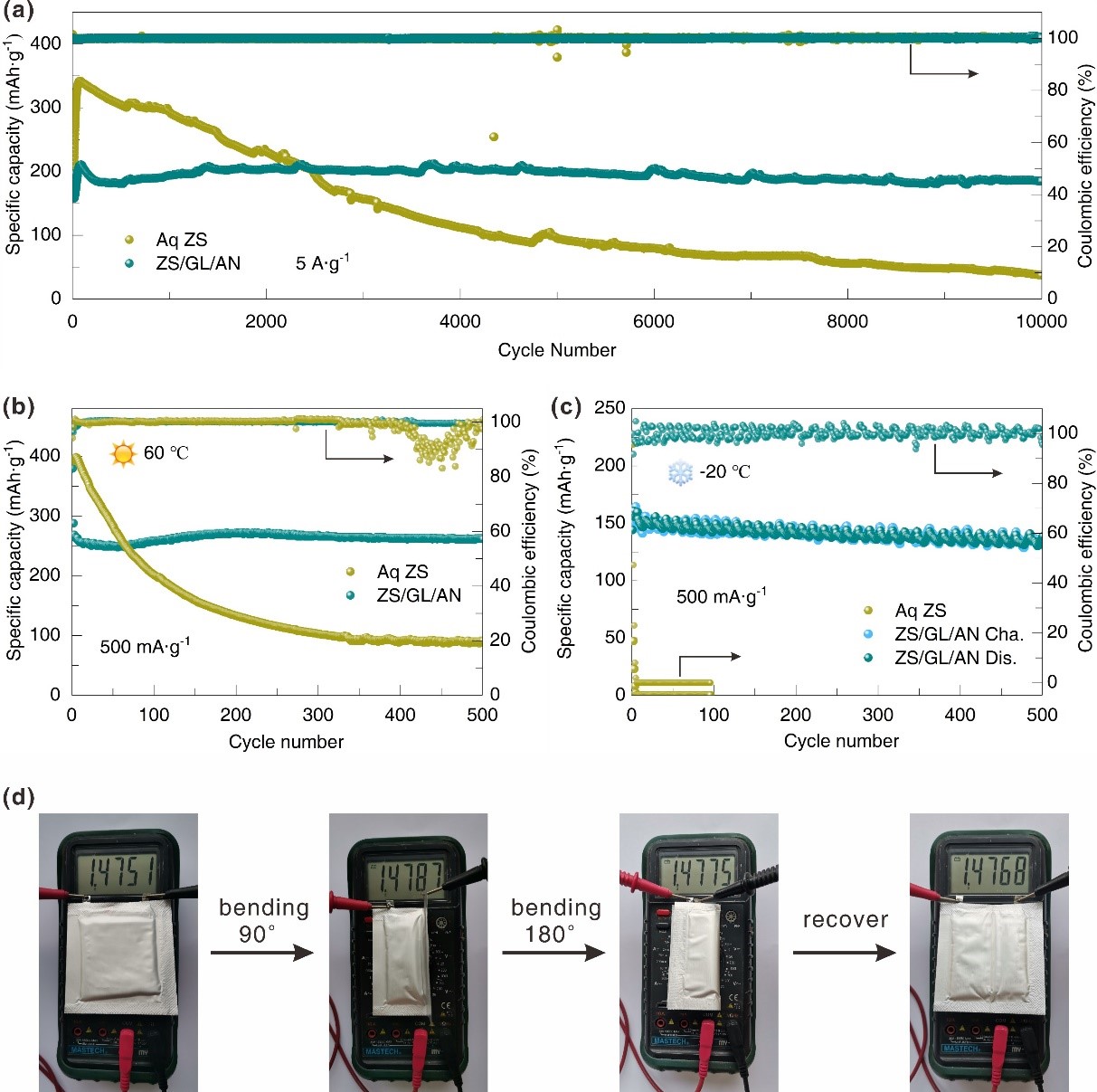
Recently, a joint research team, led by Prof HU Linhua from Hefei Institutes of Physical Science (HFIPS), Chinese Academy of Sciences (CAS), and Prof JI Denghui from Shijiazhuang University, developed a hydrogel electrolyte, which endowed battery with better stability which can be used in wider temperature range (-20 °C to 60 °C), more flexible device application, and larger capacity.
The related research was published in Chemical Engineering Journal.
Aqueous Zinc-ion battery has been considered as a potential alternative for conventional Li-ion battery with its the abundant resources and improved safety. Compared with traditional Li-ion battery, hydrogel electrolyte used for Zinc-ion battery can help to improve the safety against fire accident and leakage. However, there are still some problems such as poor stability and performance in extreme conditions.
Temperature window is a key issue for electrolyte in a battery. To solve this problem, the joint team developed a hydrogel electrolyte by in situ copolymerization of acrylamide (AM) and N,N′-Methylenebisacrylamide (MBA) in the mix-solvent of water, glycerol, acetonitrile with zinc sulfate dissolved. The copolymer of acrylamide and N,N′-Methylenebisacrylamide acts as the 3D framework of the hydrogel electrolyte and the zinc salts act as the zinc sources. This copolymer increased the percentage of intermolecular hydrogen bond between copolymer and water, and decreased the percentage of intramolecular hydrogen bond between water molecules. The bonding interaction regulation may reduce the icing opportunity at low temperature and the evaporation opportunity at high temperature, which is helpful to broaden the operating temperature range.
Another advantage of this hydrogel electrolyte is its good mechanic performance for flexible device application. Scientists found, in this research, that the voltage of the zinc-ion battery device remains unchanged after bending at different angles. The device with this hydrogel electrolyte has good electrochemical properties as 185 mAh·g-1 at 5 A·g-1, capacity retention of 88% over 10000 cycles and improved cycling stability as 3000 cycles with Zn//Zn battery.
This strategy offered new idea of the design of functional electrolyte for aqueous Zinc-ion batteries application.

Figure 1 The 3D framework by the copolymerization of AM and MBA (Image by KONG Fantai)

Figure 2 The stability of hydrogel electrolyte and battery device (Image by KONG Fantai)